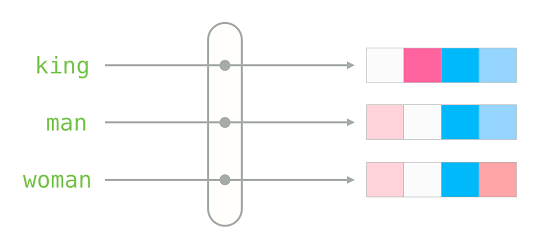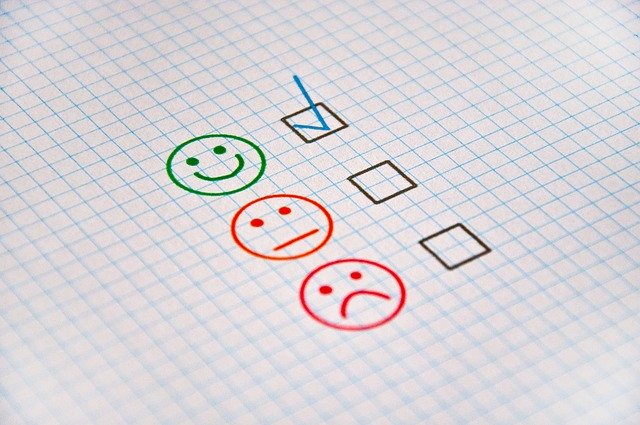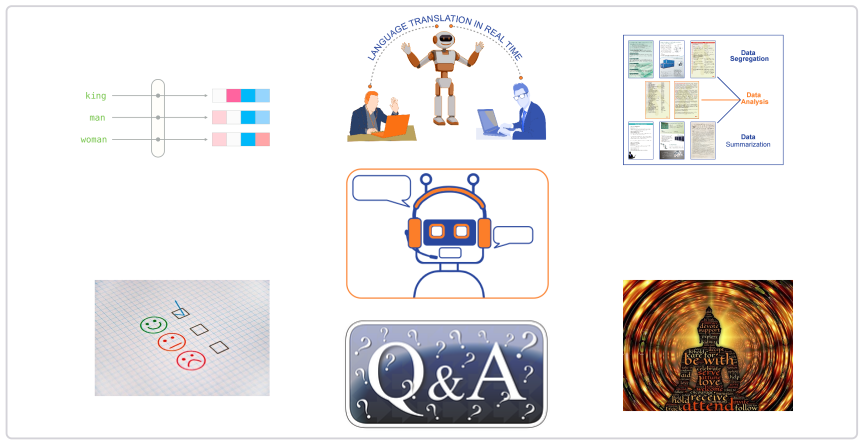As part of my research to understand the advances being made in AI / NLP technology, I read the excellent article titled ‘The 7 NLP Techniques That Will Change How You Communicate in the Future‘ by James Le that was published online here. James vividly explains these techniques in detail – which makes it an excellent read for anyone who is interested in NLP. In this article, I attempted to put my own understanding of these advances in NLP technology.
Adoption of virtual assistants, increased use of smartphones and automation of routine tasks is enabling Natural Language Processing (NLP) to be an essential part of our lives. Artificial Intelligence (AI) powered tools and systems have made significant advancements in NLP technology. From sending a message to talking with Siri or Alexa, we communicate daily with machines. Some common uses of NLP include predictive texting when we do a Google search and grammar and spell check, when we are using Microsoft Word. Both are considered as early usage of NLP to communicate with machines.
Defining Natural Language Processing (NLP):
NLP is the language component of AI. It involves analyzing and understanding human speech and text. NLP aims to bridge the gap between human communication pattern and how a computer can understand communication.
NLP dates back to the year 1950 when Alan Turing proposed a simple test (the Turing Test) to find out whether a machine can be intelligent and demonstrate behaviour identical to a human. NLP seems to be the technology that could facilitate communication between humans and machines in the near future as it powers the Google search platform, Facebook Messenger, Amazon search suggestions, and Apple’s virtual assistant Siri.
 Advanced computational techniques enable NLP to access raw text to extract meaningful data, thus speed up tasks such as ensuring data security through tokenization and parsing, part-of-speech tagging, identifying semantic relationships and language detection. NLP is most commonly used in machine translation and cognitive search.
Advanced computational techniques enable NLP to access raw text to extract meaningful data, thus speed up tasks such as ensuring data security through tokenization and parsing, part-of-speech tagging, identifying semantic relationships and language detection. NLP is most commonly used in machine translation and cognitive search.
Technically speaking, AI experts and researchers say that NLP as a comprehensive technology in itself (NLP complete) comprises 3 research areas viz:
- Machine Translation
- Question & Answering
- Summarization
The 7 NLP techniques:
 Deep learning in NLP starts with using embeddings of words. Simply put, embeddings of words (otherwise called as an Embedding matrix) is a tabular representation of fractional numbers. Each column in the table represents a word and is called a word vector for the word. The most popular names in word embeddings are Word2vec by Google (Mikolov) and GloVe by Stanford (Pennington, Socher and Manning).
Deep learning in NLP starts with using embeddings of words. Simply put, embeddings of words (otherwise called as an Embedding matrix) is a tabular representation of fractional numbers. Each column in the table represents a word and is called a word vector for the word. The most popular names in word embeddings are Word2vec by Google (Mikolov) and GloVe by Stanford (Pennington, Socher and Manning).
An excellent visualization on word embeddings provided by Jay Alammar can be found here.
It involves language detection, analysis, and translation. Machine Translation technique makes language understanding easier. Some examples include:
- Google Translate for translating text from one language to another
- The most used social media platform Facebook makes use of Machine translation to analyze and coverts text messages sent by users to remove language barriers allowing users to communicate across the globe
We all have heard about conversational AI that focuses on chatbots, messaging platforms like Facebook, Snapchat, Alexa, Google Assistant, Cortana and more. Microsoft, Facebook, and other researchers have built a neural network that has the ability to generate context-sensitive conversational responses. Now we will have a bot that can understand the context of our conversation and respond accordingly.
 We humans can understand what our friends or loved ones are trying to say just by the words and tone of their voice. Likewise, NLP technology can understand the positive and negative emotions and sentiments behind the words and phrases. In sentiment analysis, the system understands the real sentiments of more extensive texts, segregates them into positive and negative words and thereby, helps in facilitating meaningful conversations.
We humans can understand what our friends or loved ones are trying to say just by the words and tone of their voice. Likewise, NLP technology can understand the positive and negative emotions and sentiments behind the words and phrases. In sentiment analysis, the system understands the real sentiments of more extensive texts, segregates them into positive and negative words and thereby, helps in facilitating meaningful conversations.
The Q&A system extracts all kinds of information from different sources like documents, searches, texts, conversations and helps in giving a precise answer for the query being asked. The traditional Q&A systems are being combined with NLP technology like chatbots that go beyond the traditional searches and Q&A system. Companies are investing in several deep learning algorithms that helps in generating relevant responses for the queries asked.
It is a daunting task for humans to summarize large volumes of text. NLP helps in summarizing large texts into precise formats that can be easily accessed. NLP helps in generating intelligent and accurate summaries of long pieces of text. A typical summarization algorithm calculates word frequencies in the entire document, sorts them in the order of importance or context of the search and finally presents them as a summarized result.
 Humans tend to be more attentive to a specific area of a visual that comprises of several images or activities. In other words, a person focuses on one image / activity amidst several activities. This concept is applied in the NLP technology by focusing on the specific words and sentences that provide the highest level of information specific to the context. Humans tend to read contextual information in a hierarchical manner so that it helps them in better decision making. The focus / attention given to specific words in NLP is similar to the visual attention mechanism of humans.
Humans tend to be more attentive to a specific area of a visual that comprises of several images or activities. In other words, a person focuses on one image / activity amidst several activities. This concept is applied in the NLP technology by focusing on the specific words and sentences that provide the highest level of information specific to the context. Humans tend to read contextual information in a hierarchical manner so that it helps them in better decision making. The focus / attention given to specific words in NLP is similar to the visual attention mechanism of humans.
As technology advances, NLP will continue to change the way humans and machines communicate with each other. NLP is driven by the exponential augmentation in data, the increased focus on personalized customer experiences, and the abundance of smart devices. NLP will soon become a reality of daily life. Next time be careful when you speak to your device, it might reveal some information you might not know!

